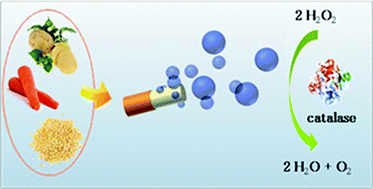Enzyme rich potato tissue can be used to cheaply and quickly mass produce bubble powered millimotors, new research shows.
Scientists have been developing synthetic self-powered motors over the last ten years after being inspired by the molecular motors that are ubiquitous in nature. These motors, including those responsible for the movement of flagella and cilia, power movement on a micro-scale by utilising fuels present in their surrounding environment.
Synthetic bubble propelled micromotors are traditionally built by coating one half of a tiny pellet with a metal catalyst or enzyme which, when placed in a solution of hydrogen peroxide, catalyses oxygen production to form streams of bubbles. This asymmetric production of bubbles, propels the pellet through the liquid.
Potatoes are rich in catalase, an enzyme commonly used in bubble powered micromotors. This led
Joseph Wang from the University of California, US, and his colleagues, back to nature to make bubble powered millimotors in a beautifully simple manner. One half of a 2 x 1 mm potato cylinder is capped with epoxy, to mimic the asymmetric design of traditional micromotors. The catalase in the exposed potato tissue catalyses bubble production and propels the potato pellet at speeds of up to 5.12 mm s
-1.

Read the full article in Chemistry World»
Read the original journal article in ChemComm:
Self-propelled chemically-powered plant-tissue biomotors
Yonge Gu, Sirilak Sattayasamitsathit, Kevin Kaufmann, Rafael Vazquez-Duhalt, Wei Gao, Chunming Wang and Joseph Wang
Chem. Commun., 2013, 49, 7307-7309
DOI: 10.1039/C3CC42782J











